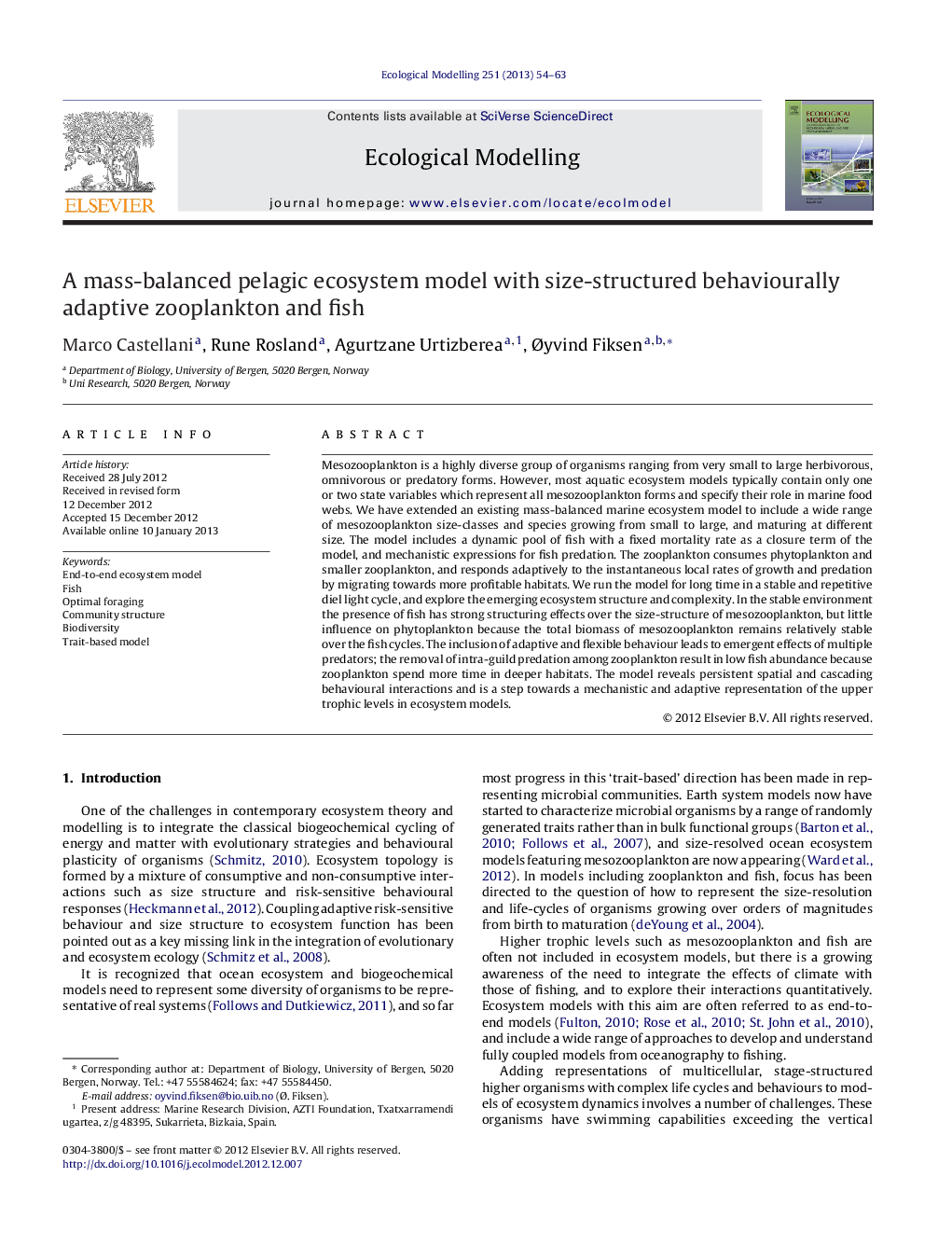| کد مقاله | کد نشریه | سال انتشار | مقاله انگلیسی | نسخه تمام متن |
|---|---|---|---|---|
| 4376141 | 1617494 | 2013 | 10 صفحه PDF | دانلود رایگان |

Mesozooplankton is a highly diverse group of organisms ranging from very small to large herbivorous, omnivorous or predatory forms. However, most aquatic ecosystem models typically contain only one or two state variables which represent all mesozooplankton forms and specify their role in marine food webs. We have extended an existing mass-balanced marine ecosystem model to include a wide range of mesozooplankton size-classes and species growing from small to large, and maturing at different size. The model includes a dynamic pool of fish with a fixed mortality rate as a closure term of the model, and mechanistic expressions for fish predation. The zooplankton consumes phytoplankton and smaller zooplankton, and responds adaptively to the instantaneous local rates of growth and predation by migrating towards more profitable habitats. We run the model for long time in a stable and repetitive diel light cycle, and explore the emerging ecosystem structure and complexity. In the stable environment the presence of fish has strong structuring effects over the size-structure of mesozooplankton, but little influence on phytoplankton because the total biomass of mesozooplankton remains relatively stable over the fish cycles. The inclusion of adaptive and flexible behaviour leads to emergent effects of multiple predators; the removal of intra-guild predation among zooplankton result in low fish abundance because zooplankton spend more time in deeper habitats. The model reveals persistent spatial and cascading behavioural interactions and is a step towards a mechanistic and adaptive representation of the upper trophic levels in ecosystem models.
Figure optionsDownload as PowerPoint slideHighlights
► We present a marine ecosystem model with fish and size-resolved mesozooplankton.
► The model includes adaptive spatial behavioural responses and diets.
► The behavioural responses affect ecosystem structure and function.
► Indirect behavioural effects from intraguild predation increase fish biomass.
Journal: Ecological Modelling - Volume 251, 24 February 2013, Pages 54–63